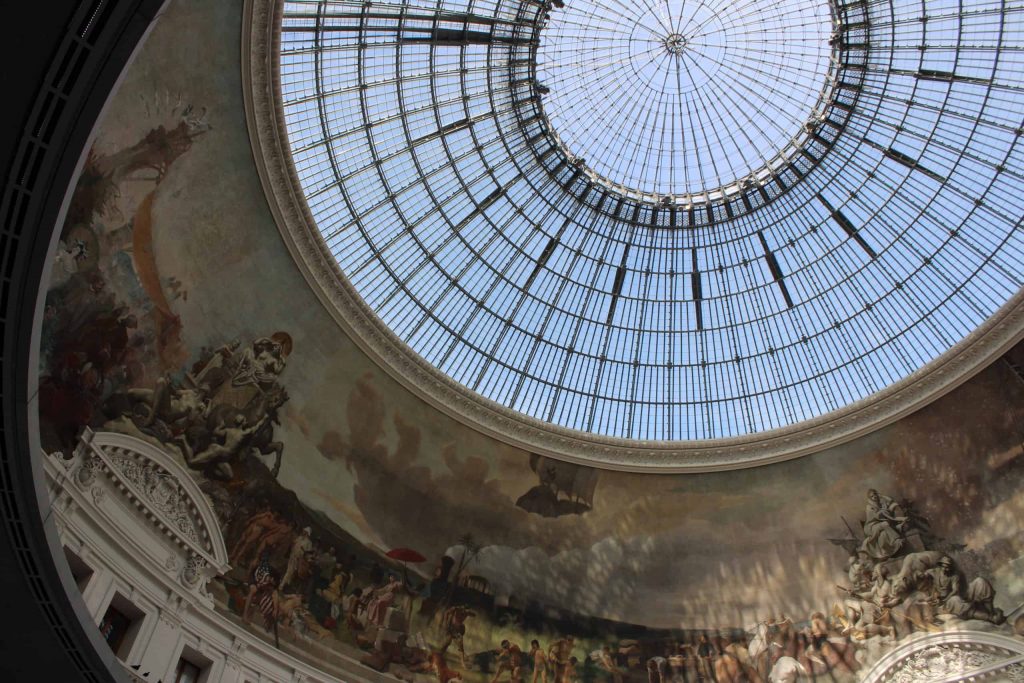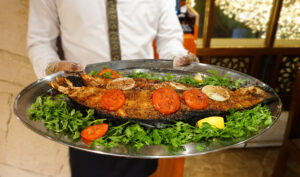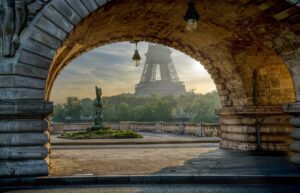Our tour of the arrondissements is back! And this week we’re taking a look at the smallest arrondissement of Paris, the 2nd. Or 2e in French. The 2e arrondissement is less than one square kilometre, but it packs a lot of sites and history into that space. From covered arcades to foodies’ havens, the 2e arrondissement has plenty to offer. Here are some of the highlights.
Bourse
First and foremost, why is this arrondissement called Bourse? It’s actually quite simple. Bourse literally translates to stock exchange. And as you may have already guessed, the 2e used to house the Paris stock exchange, known as the Bourse de Paris. The beautiful Palais Brongniart, located in Place de la Bourse, was built in the early 19th century, and quickly became the home of the Paris stock exchange. Unfortunately, the Bourse de Paris, now called Euronext Paris, is no longer at this location. But the Palais Brongniart still stands in the heart of the 2e, and it is both beautiful and impressive.
Rue Montorgueil
If you love food, you will love Rue Montorgueil. This street is packed with shops and restaurants, all of which are a feast for your eyes long before you start eating. If you love cheese, be sure to check out La Fermette. And if you love pastries, don’t miss Stohrer, Paris’ oldest bakery. This road is often packed, but for good reason. So be sure to take a stroll down Rue Montorgueil, and enjoy the impassioned food culture of Paris.
Jean Diot and Bruno Lenoir
France has a remarkably progressive history when it comes to LGBTQ rights. It was the first western country to decriminalize same sex relations between consenting adults in 1791. France was also the first country in the world to declassify transgenderism as a mental illness. But the corner of Rue Bachaumont and Rue Montorgueil marks a more tragic milestone. This is the location where Jean Diot and Bruno Lenoir were arrested on January 4th, 1750, for engaging in homosexual relations. Six months later, on July 6th, they became the last people in France to be executed for the crime of homosexuality. Today, a plaque commemorates their story and the important history it tells on this location.
Covered Passageways
Prior to the 19th century, the streets of Paris were dirty, narrow, and dangerous for pedestrians. Which is why covered passageways were built all throughout the city to provide a more pleasant shopping experience for businesses and their customers. The first covered passageway to be built was Passage des Panoramas, which opened in 1800. By the mid-19th century, nearly 200 of these passageways could be found all over the city. Sadly, only a couple dozen remain today. But the original, the Passage des Panoramas, still stands. And it stands in the 2e arrondissement.
Hidden Gems
Rue Sainte-Anne – The centre of Paris’ Japanese district and home to some truly astonishingly good restaurants.
Galerie Vivienne and Galerie Colbert – Two stunningly beautiful covered arcades that retain their 19th century tiling and mosaics.
Le Grand Colbert – The restaurant made famous by the film Something’s Gotta Give. And yes, you can order the chicken.
Place des Victoires – One of five royal places in Paris, and by far the least known and visited.
Want to read more about the arrondissements of Paris? Click HERE.
Laura Moore is a professional storyteller who loves history and the many stories that make Paris one of the most fascinating cities in the world. Join one of her signature tours to learn the story of a city.




